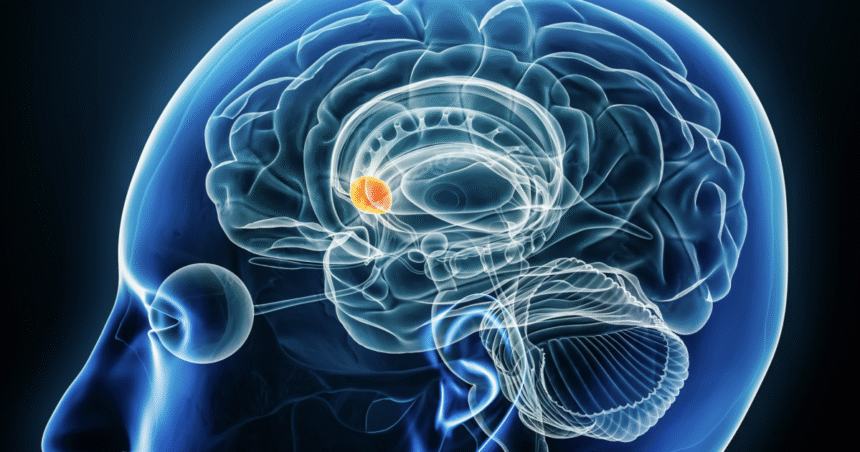Dopamine doesn’t flood the brain as once believed – it fires in exact, ultra-fast bursts that target specific neurons. The discovery turns a century-old view of dopamine on its head and could transform how we treat everything from attention-deficit/hyperactivity disorder (ADHD) to Parkinson’s disease.
Researchers from the University of Colorado Anschutz Medical Campus made this discovery while investigating dopamine transmission, finding that the neurotransmitter isn’t “sprayed” broadly across the brain (like mist from a spray bottle), but is instead released in highly localized hotspots that are trigger-specific. What’s more, it’s not a continuous or gradual release but occurs in short, sharp bursts – essentially sparking on and off, and directed at different targets.
“Our current research found that dopamine signaling and transmission in the brain is much more complex than we thought,” said lead author Christopher Ford, a professor at the School of Medicine. “We knew that dopamine plays a role in many different behaviors, and our work gives the beginning of a framework for understanding how all those different behaviors could all be regulated by dopamine.”
Using two-photon microscopy, the team saw that dopamine is released in these disparate hotspots with millisecond precision – which suggests the brain can selectively target small neural populations with the neurotransmitter to fine-tune specific behaviors or decisions. Traditionally, dopamine has been seen as something that diffuses over broad regions of the brain simultaneously, making it primarily serve as an overall behavioral modulator and influencer.
Ultimately, dopamine release in the striatum is both spatially and temporally discrete – which makes it far more complex signaling mechanism than we’ve previously understood it to be. Which also opens up huge potential for better understanding conditions involving dopamine dysregulation – including Parkinson’s disease, addiction, schizophrenia, ADHD and depression – and how we treat them.
Because if there’s one takeaway from a century of neuroscience studies, it’s that there’s no “one size fits all” intervention when it comes to even one of these conditions. Medications like stimulants (like methylphenidate for treating ADHD) and dopamine agonists (pramipexole for Parkinson’s disease) are more broad-spectrum treatments to boost dopamine activity overall.
The team’s analysis found that not only did dopamine function in these short, sharp bursts at different times and to different neurons, enabling real-time adjustments in activity, it also produced slower, broader diffusion across larger areas. This dual-layered signaling system works in tandem, fine-tuning individual circuits while coordinating complex functions like decision-making and learning.
“We are really only at the tip of the iceberg in trying to understand how dysfunctions in dopamine contribute to diseases like Parkinson’s disease, schizophrenia or addiction,” said Ford. “More work is needed to grasp how these specific changes in dopamine signaling are affected in these different neurological and psychiatric diseases. The goal, of course, would then be to build on those findings to come up with new and improved treatments for those disorders.”
Understanding dopamine’s “precision signaling” could have a profound impact on how we better treat the conditions that this neurotransmitter plays such a key role in.
The study was published in the journal Science.








